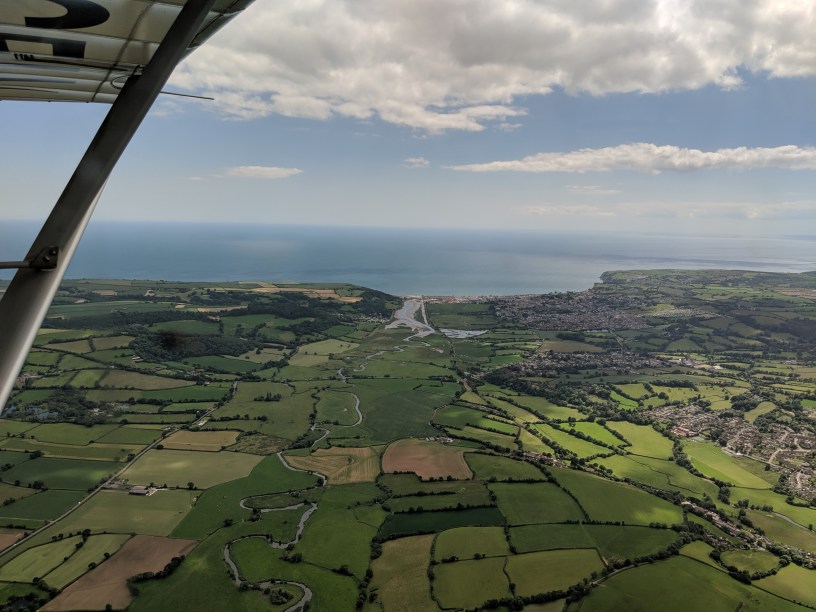Funny how a single trip can catapult you from ‘I may have my radio licence but what the heck do I say now’ to a confident operator. Talk to enough people on your in-flight radio, and you soon fall into the second category. Nothing ever prepares you for everything they ask though, and it’s now become a game – how are they going to trip us up this time?
We were heading down to Devon through the narrow gap between Heathrow and Booker, so talking to Farnborough on Midsummer’s Day wasn’t really optional. It was a bumpy day in the air, and I was thanking my lucky stars we hadn’t gone the day before, when the cloud was even thicker. This was the day everyone was heading down to Spamfield, so the airwaves were abuzz. Farnborough North got rid of us to Farnborough West with unseemly haste. “You can’t ask for their help and then not listen to them,” my instructor had always said. So we were listening. And the sharp staccato sounds of Black Black, a helicopter with this as a callsign, never seemed to stop. They were seeing traffic, avoiding traffic or being traffic themselves, so that by the time we signed over to the Odiham Matz my head was throbbing with the constant chatter. On top of that it was a difficult day’s flying, trying to keep the aircraft stable with gusts that threw you around like a leaf. Odiham was blissfully uninterested in us until we requested switching to Compton Abbas.
There was another learning curve. The airfield, as you may know, is perched on one side of a hillside rather like a volcanic crater, so as you do your circuit, the ground falls away beneath you. “Don’t get low here!” warned James, and I realised that at least one thing my instructor had taught me I now did on auto, and that was look out of the window and take my cues from the surrounding landscape. That’s not much help though when you are surrounded by hills.
Leaving Wiltshire, heading west, the ground was a pretty level patchwork of fields with a few specks of clouds. For about ten minutes. At the same time as Yeovilton Matz declined any interest in us, or any other aircraft on that frequency – ‘the service is not available today’ – a monster black cloud was spreading itself across to our right. On the left was the coastline, sunny, clear and out of bounds in most places, and on the right, the cloud was bearing down on us. I was happy not to be flying that stretch and sat looking at how fast the ground was rising and checking what diversion airfields would be available to us. The answer was none. Heading back to Compton Abbas didn’t seem sensible, and the band of rain wasn’t on our track ahead, so we decided we could take the gap between the coast and the clouds. “It was never that bad,” James assured me later. He’s good at that!
Eventually Exeter hailed us with a broad West Country accent, later telling another pilot about slow-moving traffic to their left. James was mortified!
Flying locally, we have discovered that pilots like to tune into Exeter or Newquay, simply to be on frequency. A local who landed not long after us told me, “I heard you when you were talking to Exeter,” even though he had been taking a bimble in the opposite direction. And it is worth making sure you have signed off from them and are back squawking 7000 before the radio reception gets so bad, they can’t hear you.
I can’t believe there is a more beautiful place to experience from the air – with all the coves and gullies, hugging the coastline, seeing the rivers and estuaries at high tide and low. The locals are friendly and welcoming, and each airfield has a quirky story to it. Farway Common will get the sheep off the runway if you are coming in, Bodmin would like you to avoid the live ammunition shots that happen on the eastern side of their runways and Halwell had a funny moustache-like hedge down the middle of the runway you can see from miles away.
Now if there wasn’t a massive storm brewing, I would be finding a few more fields to land in!

Sounds like a you had a wonderful trip… I never realised you could squawk!
No wonder you got yourself the FRTOL.
LikeLike
Certainly an interesting trip coming down here Alan. Hopefully still a lot more to explore if the weather improves.
LikeLike